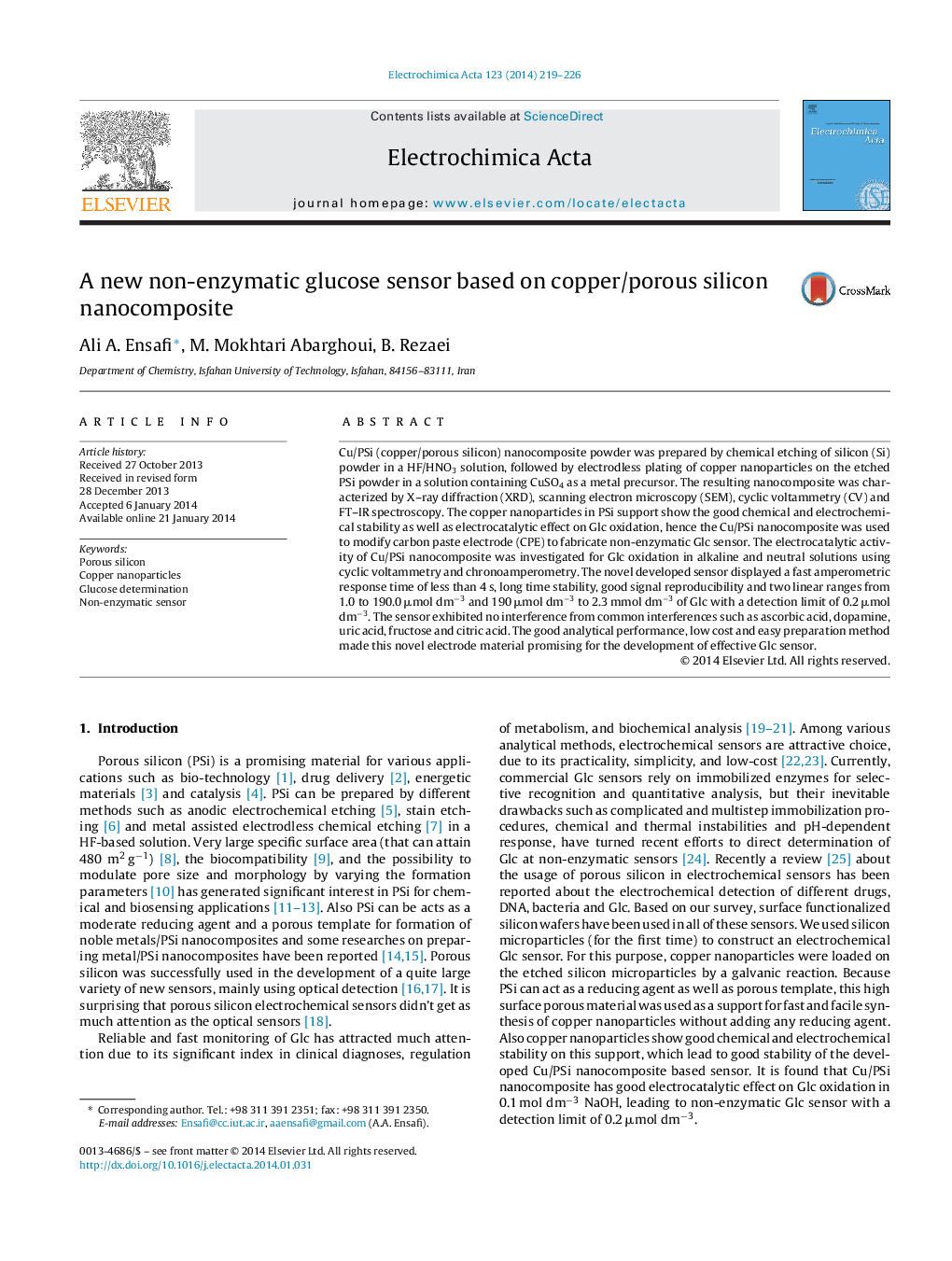| کد مقاله | کد نشریه | سال انتشار | مقاله انگلیسی | نسخه تمام متن |
|---|---|---|---|---|
| 186013 | 459606 | 2014 | 8 صفحه PDF | دانلود رایگان |
Cu/PSi (copper/porous silicon) nanocomposite powder was prepared by chemical etching of silicon (Si) powder in a HF/HNO3 solution, followed by electrodless plating of copper nanoparticles on the etched PSi powder in a solution containing CuSO4 as a metal precursor. The resulting nanocomposite was characterized by X–ray diffraction (XRD), scanning electron microscopy (SEM), cyclic voltammetry (CV) and FT–IR spectroscopy. The copper nanoparticles in PSi support show the good chemical and electrochemical stability as well as electrocatalytic effect on Glc oxidation, hence the Cu/PSi nanocomposite was used to modify carbon paste electrode (CPE) to fabricate non-enzymatic Glc sensor. The electrocatalytic activity of Cu/PSi nanocomposite was investigated for Glc oxidation in alkaline and neutral solutions using cyclic voltammetry and chronoamperometry. The novel developed sensor displayed a fast amperometric response time of less than 4 s, long time stability, good signal reproducibility and two linear ranges from 1.0 to 190.0 μmol dm−3 and 190 μmol dm−3 to 2.3 mmol dm−3 of Glc with a detection limit of 0.2 μmol dm−3. The sensor exhibited no interference from common interferences such as ascorbic acid, dopamine, uric acid, fructose and citric acid. The good analytical performance, low cost and easy preparation method made this novel electrode material promising for the development of effective Glc sensor.
Copper/porous silicon nanocomposite powder was prepared by electrodless plating of copper nanoparticles on the etched silicon. The electrocatalytic effect of this nanocomposite on glucose oxidation was investigated. The novel developed sensor displayed a fast amperometric response time of less than 4 s. The sensor could detect glucose as low as 0.2 μmol dm−3.Figure optionsDownload as PowerPoint slide
Journal: Electrochimica Acta - Volume 123, 20 March 2014, Pages 219–226
